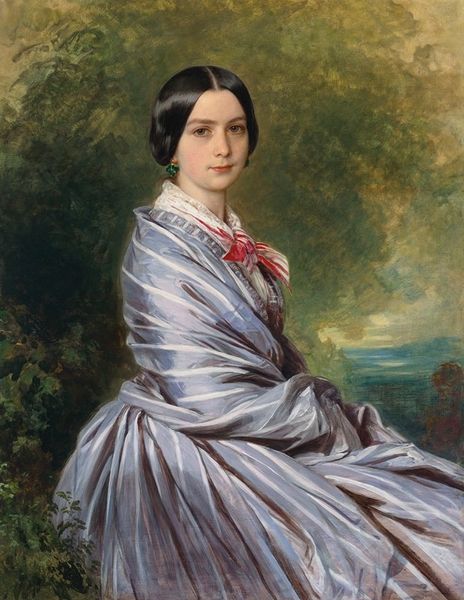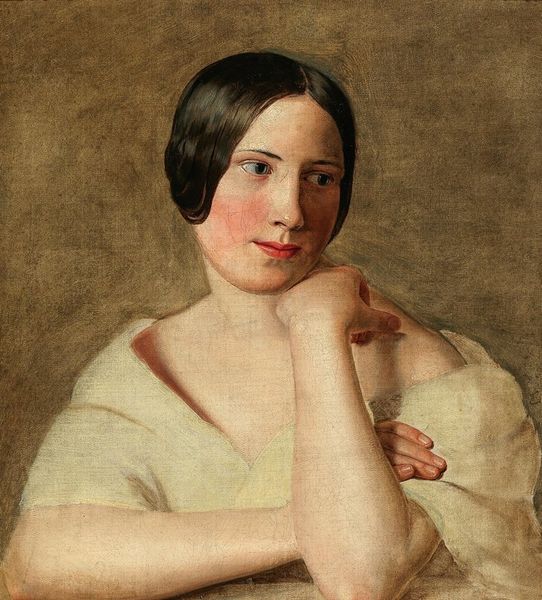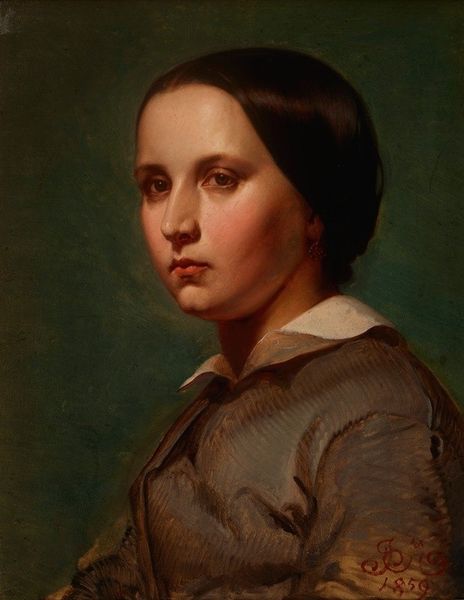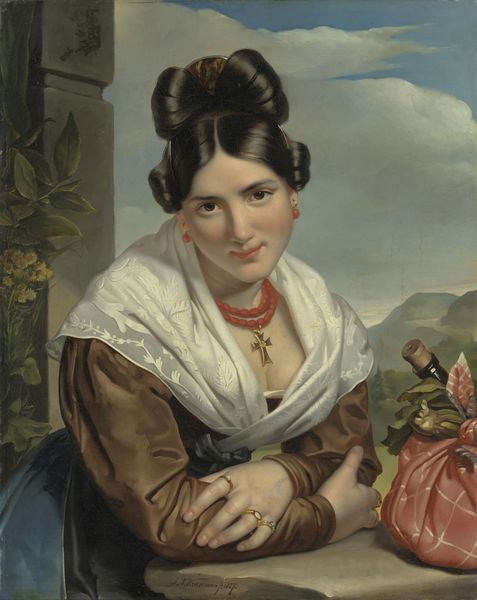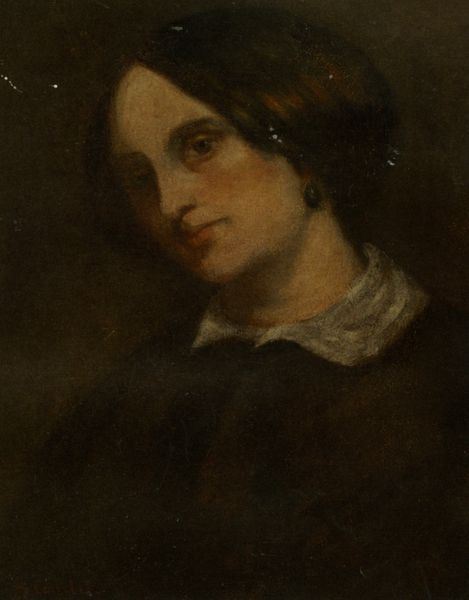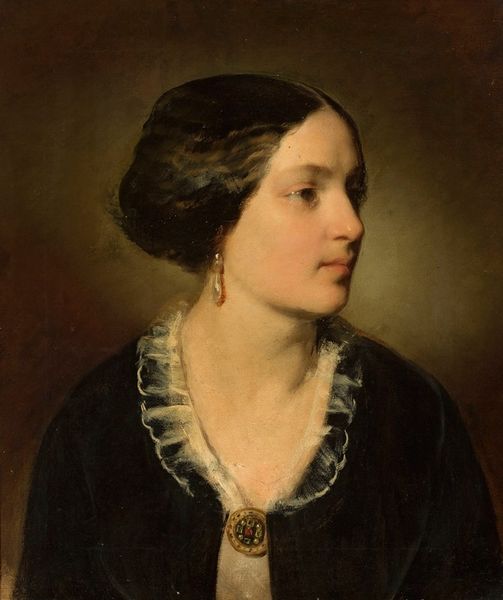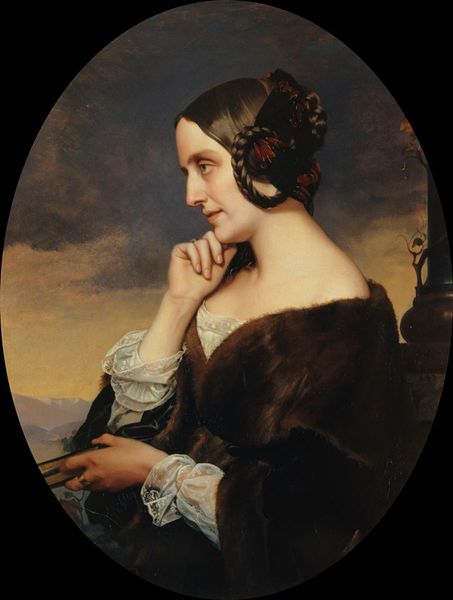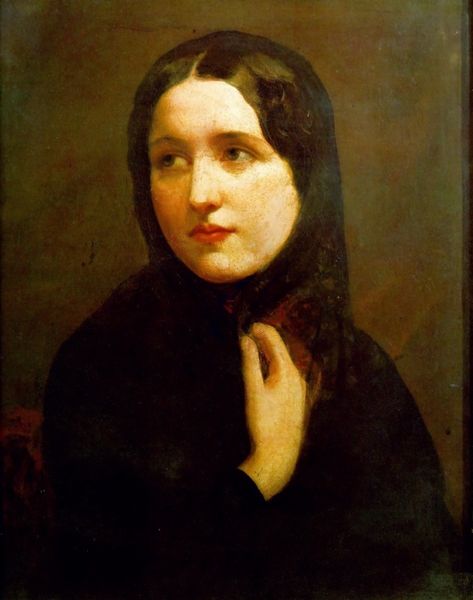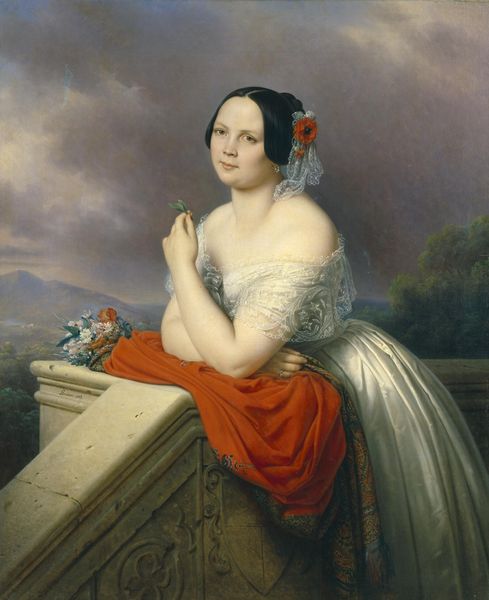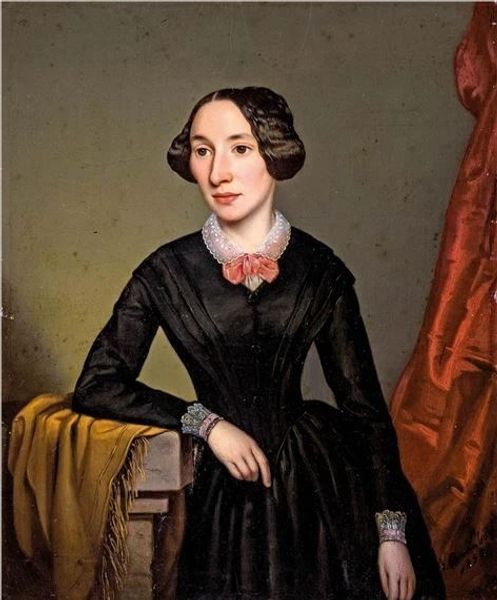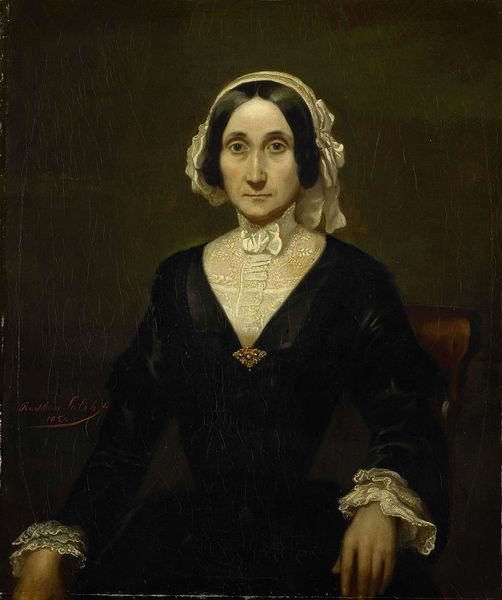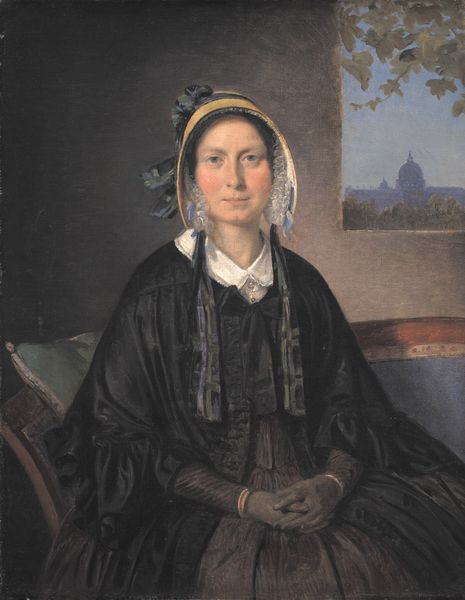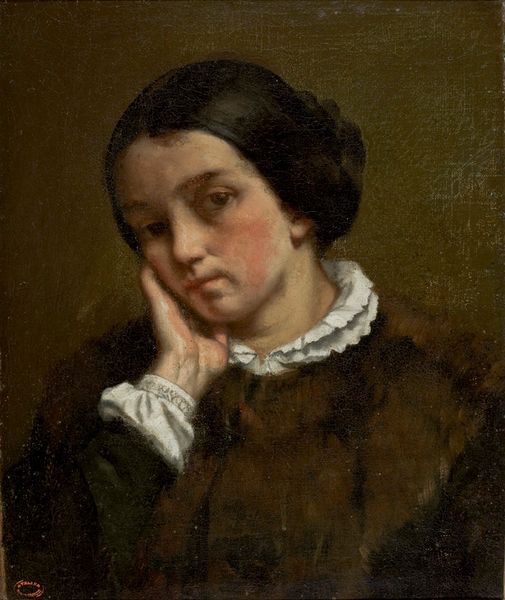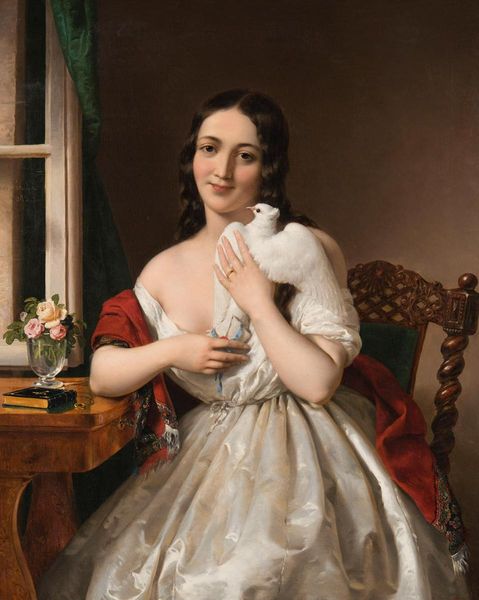
painting, oil-paint
#
portrait
#
painting
#
oil-paint
#
figuration
#
romanticism
#
genre-painting
#
academic-art
#
realism
Copyright: Public domain
Curator: This painting is a portrait of Maria Rosetti, executed in oil on canvas by Constantin Daniel Rosenthal. Editor: My first impression is one of quiet introspection. She appears caught in a moment of thought, her gaze distant, almost melancholic. The somber palette certainly reinforces that mood. Curator: Rosenthal was, beyond an artist, a political activist during the 1848 Wallachian Revolution. Considering that Maria Rosetti was a prominent figure in Romanian journalism and a staunch advocate for social reform, it's interesting to consider their intersecting roles in the public sphere and how Rosenthal might have perceived her position as a public intellectual in this rendering. Editor: It's interesting how you frame that, seeing as during this time period we begin to see the rise of journalism with a bent of social consciousness. Her direct gaze combined with the romantic landscape background certainly makes her seem to be an allegorical representation of Romania itself at a turning point. Rosenthal did a few allegorical portrayals in his body of work. Curator: The contrast between her dark dress and the pale landscape might signify the burden that Maria Rosetti had as a prominent Romanian figure who spoke out when other citizens dared not speak. The hand supporting her head speaks volumes; she wasn't just a pretty face but a forward thinker who pondered serious issues during a time of conflict. Editor: Absolutely. Looking at it from an art historical lens, the painting is so rooted in academic realism and Romanticism. These two styles blended well during this time to add nuance to portraiture. Rosenthal's work gives us insights into how influential members of Romanian society wanted to present themselves but how society in return received them as intellectuals, mothers, daughters, or sisters during such unrest. The portrait gives rise to the role of women during this volatile time. Curator: Definitely. Her story speaks to the critical roles that women play within revolutions, going against typical portrayals where they are frequently invisible in historical records or merely adornments in domestic positions. It's through works such as these we are able to gleam perspectives from periods often overlooked in favor of men and their ideas. Editor: Examining Rosenthal’s historical context surrounding such movements and then juxtaposing that information alongside the historical implications that Rosetti carried shows that artworks such as these are vessels which carry many interpretations of any moment. It gives me insight into how Romania sees its progression towards independence and its relationship between social and personal matters. Curator: A powerful convergence indeed, prompting deeper explorations and critical re-evaluations.
Comments
No comments
Be the first to comment and join the conversation on the ultimate creative platform.
